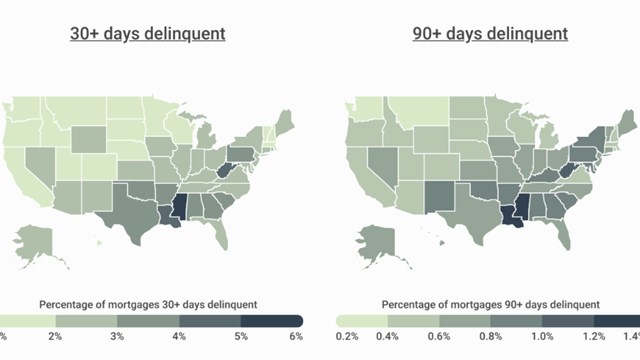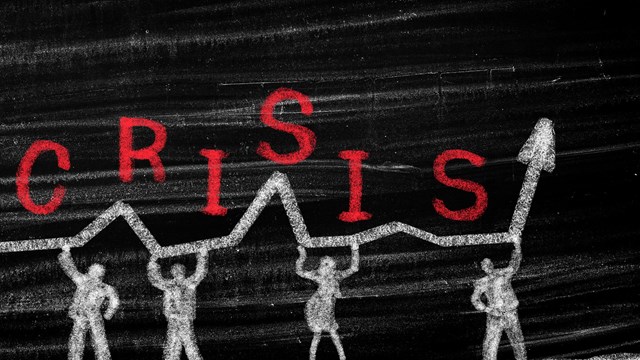Thanks to COVID, managing co-ops and condo communities over the past couple of years has been a vastly more complicated job than it was in ‘the Before Times.’ From staff shortages and supply chain disruptions to the struggle to enforce mask and vax mandates among staff and residents alike, managers have dealt with a lot—and many have gone above and beyond in keeping their client communities safe and connected through an extraordinarily stressful time.
That said, there are still some basic, fundamental duties and responsibilities that a building or HOA should expect from its manager. Those haven’t changed—and boards should have a way to assess the performance of their management, and a method of communicating with him or her when that performance isn’t quite up to snuff.
No Two Days Alike
“We have to do everything that’s necessary to keep the building running,” says Daniel Wollman, CEO of Gumley Haft, a management firm based in New York City. “And that includes infrastructure issues, mechanical issues, shareholder or resident issues, and staff issues. Every day is different. You can list 10 priorities to take care of when you come in in the morning, and by 9:30 a.m., there are 10 more priorities to take care of.”
David Movahedian, CEO of Alpha Property Management in Queens, says that as a property manager and a fiduciary, he is responsible not only for the financials, but also the safety of the site staff and occupants of the buildings he manages, and that “In addition to residential, I manage commercial buildings with high-profile tenants [as well], and the safety concerns for these tenants are front and center.”
Numerous as they are, the role and responsibilities of managers haven’t deviated much over the years—but they took a sharp right turn during the pandemic. Managers faced situations they’d never encountered before, and had to take on roles that were not part of their original job description.
“We’re not doctors or medical personnel,” says Wollman, “and we got thrust into managing a pandemic. It’s been extremely difficult. My company manages about 75 buildings, and I am responsible for the 6,000 people who live in them, the 1,000 people who work in them, and all the people who work in my office. That’s a pretty big responsibility that I take extremely seriously.”
Wollman explains that the managers in his firm and all around the region and the country had the added responsibility of following the CDC and state guidelines in their daily tasks. “We bent over backward to make sure that our people were safe, and had to design and implement new procedures for using the common areas like the gym or the laundry to keep everyone safe.”
Other COVID Considerations
The pandemic also added a new set of challenges that managers needed to deal with—including maintenance and repair jobs that took significantly longer than normal because of contractor crew issues and supply shortages.
Contractors’ crews were often short-staffed due to illness or exposure, causing a backlog, “So jobs we were doing were taking twice as long,” says Wollman. Also, management had to work closely with contractors to make sure the safety protocols put into place were being adhered to, including keeping contractors six feet apart on scaffolding and adding handwashing stations and new elevator procedures.
Management also had to become ad hoc public health agents, enforcing the wearing of masks and social distancing, which often led to interpersonal conflicts as the pandemic became not just a health issue, but a political one.
“If contractors didn’t comply [with rules and guidelines], we just didn’t let them in the building,” says Wollman, “but when you have a shareholder without a mask and they curse at you, what do you do? Those were complex issues, and we didn’t want management having altercations with residents, so there were letters and signs for the safety of the tenants—but some people don’t care about anything like that.”
With the reduction of COVID cases (as of this writing, at least), and lifting of federal mask mandates, Wollman says that now boards can make their own decisions on masks, distancing, and other measures they may have had in place earlier in the pandemic.
“I have some boards that are extremely conservative, and others that are extremely liberal in terms of policy, and some are basically business as usual,” says Wollman. “Some buildings still want one person on the elevator at a time and masks, so we have to adapt to their policies.”
Putting Performance in Perspective
All this being said, Movahedian says he doesn’t think COVID has significantly changed the landscape of building management. Rather, “I think COVID opened everyone’s eyes to new possibilities that maybe were shunned previously,” he says. “For example, board meetings and monthly meetings can now be conducted over video calls, regardless of your location. The same applies to real estate closings and tenant/shareholder interviews. They’re no longer centralized. It’s a tremendous time-saver, and opens new possibilities.”
But if property manager job descriptions have changed even a little bit, how does a board gauge the performances of their property managers? A board should neither shy away from conducting a thorough, honest and open performance review of its management agent—nor should it be afraid to up the frequency of reviews should management underwhelm. Confrontation is never easy, but the association is a client of the managing agent, and as such can set the terms.
“Regardless as to the nature of the vendor, associations should review that vendor’s performance on at least an annual basis,” says Martin C. Cabalar, an attorney with Becker & Poliakoff in Morristown. “The determination to make a change should not be based on price alone—meaning that you don’t necessarily have to go with the low bidder if you are satisfied with the capabilities of your management company and, more importantly, the services which you are being provided.”
“Some boards evaluate or do a critique of what we’re doing, but they don’t do a formal review,” says Wollman. “Instead, when a tenant or board has a problem with our responsiveness, wrong decisions, or a staff that isn’t operating at an appropriate level, the boards just talk to us about it.”
Movahedian agrees. “The number one task and only item on our checklist is to pick up the phone and call the ownership/board and take their pulse on my progress and services,” he says. “We are in the business of providing time and service and in my opinion, I owe it to the ownership/board that hires me to call the boards at least once every quarter so I can gauge and measure my capacity to adjust to the needs and services the boards are asking for.” For example, Movahedian recently called his board of managers for a condominium in Brooklyn to find out how everything was going. “They were very appreciative of my call and brought some staffing as well as cleanliness issues to my attention which were subsequently addressed.”
But what if Mrs. Smith is annoyed that the manager or super didn’t get to a leak fast enough—what happens next? “We evaluate the situation, take action and develop a plan to bring it to closure,” says Wollman. “Some of those things may not be able to be done immediately, but we can evaluate it and get our plan together. Our next parts of the plan may involve Mrs. Smith or Mrs. Smith’s neighbor below her or the neighbor above her to gain access to her pipes.”
The property manager also has to work with the dynamics of the residents. “There might be someone who isn’t very cooperative, and we have to figure out a way to convince them to let us in,” Wollman continues. “We may even need to sit with the shareholder and explain what we are doing.”
Wollman says he also works closely with the board president so they know exactly what complaints or concerns are coming in. “We’re getting instant feedback too, so they know what the process is and how we’re bringing whatever that is to closure,” he says. “The board may have a different suggestion for us as to how we should handle it. I have to be diplomatic; I might need someone on the board who knows that person better than I do to help me explain to [the resistant resident] why I need to do what we have to do.”
Problems do happen though. “If there is something going on with a manager, I sit down with them to understand exactly what happened—sometimes the manager is right, and sometimes the manager is wrong,” says Wollman. “If the manager is wrong, we need to identify what happened and how it can be corrected. Many people are great at identifying problems, but they have to be solution-oriented too.”
“The association-management relationship is very unique,” Cabalar adds. “There are many qualified and well-respected management companies out there, and oftentimes, the decision to make a change has everything to do with the manager—not the specific management company. And the main signifiers that management may be underperforming will usually be pretty obvious. For example, perhaps the manager was very responsive to the owners and the board during the first year or two of their contract, but as some level of comfort sets in, so does some apathy. Maybe you recognize that the manager is routinely showing up late, or leaving the office early.”
Good managers and firms are committed to doing additional training and continuing education in order to improve their skills and keep them current in a fast-changing field. According to Wollman, “There is training on things like infrastructure,” he says, “and while there isn’t a one-size-fits-all training for all of the everyday problems that can come up, a good manager can apply some of the tactics they used to resolve one problem when they’re trying to resolve another.”
The pros also agree that other team members, like attorneys, accountants, contractors, and architects, are also great resources for any manager seeking to guide a client community through any tricky situation, be it a major capital project, an interpersonal dispute, or—as we well know—a global pandemic. While nobody knows what the next few years may bring, and how it will impact the responsibilities of property managers, the fact remains that working together with boards and residents—the human part of a complex equation—is still the bedrock of management success.
Lisa Iannucci is a freelance writer and contributor to CooperatorNews.







Comments
Leave a Comment